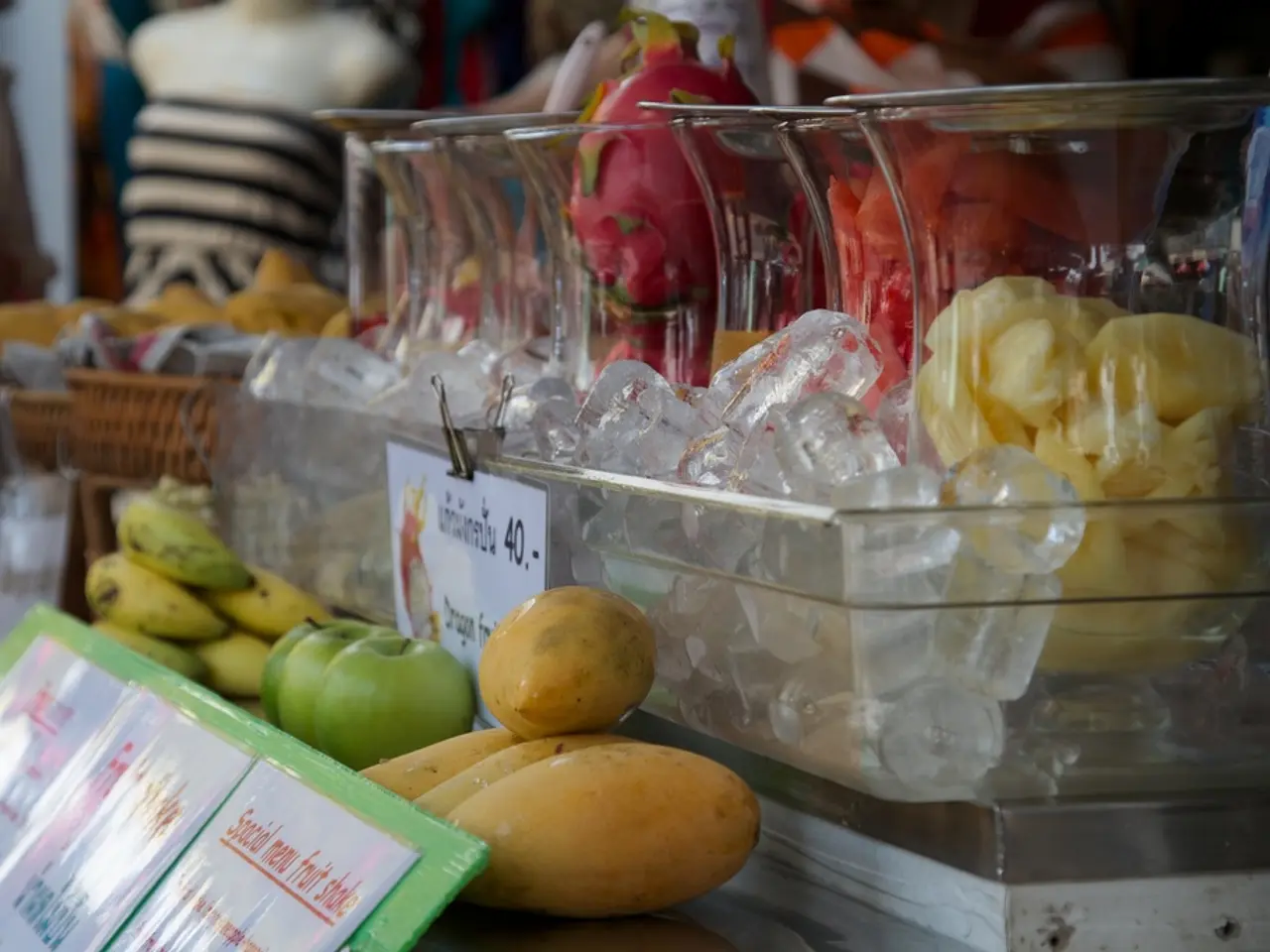Preserving or Cooking: Which Method is Best?
==============================================================
Anna Dandekar, a nutrition advisor, recently shared her insights on preserving fruits and vegetables with Andreas Fischer. In the discussion, they explored various methods, including freezing, canning, pickling, and fermenting.
Fermentation is Anna's personal favorite method for preserving fruit and vegetables, thanks to its unique taste and probiotic benefits. However, each method has its merits, and the best one often depends on the type of produce, storage duration, and desired flavor and texture outcomes.
Freezing is a quick and effective method for preserving delicate fruits like berries and leafy greens. Root vegetables should be blanched before freezing to maintain their texture and flavor. Modern freezing methods like convective dehydrofreezing can even preserve the texture of bell peppers better than conventional freezing.
Canning, on the other hand, is a more involved option for preserving fruit and vegetables. It involves heating food to kill microorganisms and sealing it in airtight containers. This method works well for many vegetables and is more economical for long-term storage. Using a pressure canner is essential for low-acid vegetables to ensure food safety.
Pickling is another method for preserving fruit and vegetables. Foods like root vegetables can be sliced and soaked in a vinegar-based brine, which lowers pH and prevents spoilage by inhibiting microbes. This method adds a tangy flavor and is especially useful for crunchy produce like carrots, beets, cucumbers, and more.
Fermentation is an ancient preservation method that involves controlled microbial growth to acidify and preserve food. Common examples include sauerkraut, pickled cucumbers, and some fruits. Fermentation enhances flavor and can improve texture, providing probiotics as a bonus.
Here's a comparison of these methods, including their best uses, key advantages, and important tips:
| Method | Best For | Key Advantages | Important Tips | |------------|----------------------------------|---------------------------------|---------------------------------------------------------------------------| | Freezing | Berries, leafy greens, root veg | Maintains nutritional value; quick preservation | Blanch root veggies before freezing; freeze herbs in oil or water; use airtight packaging[1][3] | | Canning | Vegetables like beans, carrots | Long shelf life; economical | Use pressure canners for low-acid veggies; follow safe processing times; sterilize jars thoroughly[3][5] | | Pickling | Root vegetables, cucumbers | Adds flavor; safe preservation | Use vinegar brine with appropriate acidity; refrigerate or process for shelf stability[1] | | Fermenting | Cabbage, cucumbers, some fruits | Enhances probiotics; unique taste | Use clean equipment; control salt and temperature for consistent fermentation; monitor for mold[1][5] |
Additional insights from the discussion include the importance of blanching vegetables before freezing, the benefits of modern freezing methods, and the role of cooling methods like forced-air cooling and hydrocooling in maintaining freshness before preservation. To prevent enzymatic browning and nutrient loss in fresh-cut fruits and vegetables, reducing oxygen exposure and using acidic solutions like lemon juice can be beneficial.
Anna Dandekar also discussed the possibility of skipping sugar when canning fruit. She suggested that berries can be made into jam for canning, and all kinds of vegetables can be canned. However, eggs, dairy products, and leafy greens like lettuce should not be frozen.
When it comes to preserving fruits and vegetables, combining methods can be a useful strategy. For example, freezing herbs in pesto sauce is an effective way to preserve flavor and aroma.
Currently, tomatoes, cucumbers, strawberries, and plums can be harvested from a garden, making now the perfect time to start preserving them using these methods.
- Anna Dandekar, a nutrition advisor, highlighted that fermentation is an ancient preservation method that not only enhances the flavor and texture of fruits and vegetables but also provides probiotics as a bonus.
- When discussing different methods of food-and-drink preservation, Anna recommended blanching root vegetables before freezing to maintain their texture and flavor, while berries can be readily frozen without this step.
- For those aiming to follow a home-and-garden lifestyle, Anna suggested the creation of home-made recipes using pickling, freezing, canning, or fermenting, such as freezing herbs in pesto sauce or pickling root vegetables for a tangy and safe preservation.





